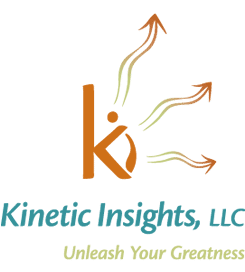Weaknesses are traits or behaviors that, because we’re aware of them, we can choose to strengthen or not. In contrast. blind spots are, by nature, an obstructed view – invisible to us. Because we’re not even aware of them, we are also not aware of how they shape our thinking, trigger emotions, and direct our behaviors.
How Do You Cure Your Blind Spots?
Written by Kristi Thompson
Looking at it from another angle, our blind spots are frequently the opposite of our strengths on which we all build our success. Additionally, we have a strong tendency to use our strengths more and more, developing habits and patterns of thinking and acting. The unintentional over-reliance on these habits comes at the expense of developing alternative and broader thinking skills, resulting in a limited range. And then one day, we’re in a situation which calls for a way of thinking that is out of our range, and we struggle. Consider these examples of blind spots showing up:
“Blind spots are, by nature, an obstructed view – invisible to us. Impatient? Overly methodical? Avoid conflict? Resist being all-in? You’re not alone”
A leader who favors data and has strong analytical skills knows exactly how to evaluate the ROI of major investments. He has a team trained in a robust discipline who approaches the analysis systematically with a high degree of exactness. Then, he’s charged with leading a team to assess and recommend whether to acquire another company – a multi-faceted decision that needs to be made with speed. While his analytical abilities are very strong, he has a weak muscle when it comes to trusting intuition – his own or others.’
A leader is very confident in her own opinions and she uses that certainty to clearly communicate goals and expectations. This clarity invokes confidence among her team. When that manager is promoted to lead a highly visible, multi-disciplinary strategic project in which she has neither the expertise or experience, she is struck. Collaborating and being open to multiple perspectives are out of her range.
According to Inc.com, blind spots limited people in many different ways; extensive research has shown the following leadership blind spots occur most frequently.
- Being afraid to ask for help
- Lacking awareness of how your behavior impacts others
- Highly valuing ‘being right’
- Avoiding important-but-difficult conversations
- Blaming others or circumstances for results)
- Treating others’ commitments (time and resources) casually
- Being driven by a personal agenda
- Withholding emotional commitment
- Failing to take a stand
- Tolerating ‘good enough’ performance
Why Do Blind Spots Matter?
As an executive coach, it has become apparent to me that most leaders are in a constant state of deficiency of time, energy, and resources.
The impact of this state of deficiency? Sacrificing high-quality thinking: reflection and contemplation.
In the VUCA environment of business, leaders are sacrificing the highest value that they can bring to their organizations: thinking agility. Thinking agility comes from having a broad range of thinking and behaving patterns. It provides the capacity to reflect and contemplate dynamically, enabling a leader to pivot from one thinking style to another that is more effective for the challenge or opportunity at hand.
Jeff Sostrin, Director of PwC’s U.S. Leadership Coaching Center of Excellence offers these suggestions of developing your thinking agility and related competencies.
Understand Your Thinking Sweet-Spot
Your sweet spot is what I refer to as your auto-pilot, your go-to preferences and tendencies, e.g. analytical, practical, relational, experimental. Hermann Brain Model is one such tool, and there are others. An executive coach can help you discern your preferred thinking patterns.
Discover Your Gaps
Blind spots are a significant component of your gaps. They are unused capacity for thinking and behaving that you’re not aware of. Revealing your blind spots opens access to and capacity for new patterns, ones that may be a better way to address a new situation. To increase your awareness, consider the last situation at work that didn’t turn out as well as you’d have liked. What thinking pattern did you over-rely on? What did you ignore? How else could you have thought about the situation that would have driven different actions, conclusions or results?
As Situations Change, Change Your Thinking
Knowing your sweet spot and your gaps will provide insights into alternative thinking patterns that you’re not using. As you face new situations be intentional about considering alternative thinking patterns, enabling yourself to move out of auto-pilot and to choose the ideal response for producing results in the new situation.
“Your capacity to reflect dynamically amid this shifting landscape is what matters most.” -Jeff Sostrin, PWC
Be intentional about stretching your thinking agility. Allow yourself time to build this capacity when pressure is low. High-pressure yields to thinking and behaving patterns that you know best
At Kinetic Insights, our PathFinders are skilled in helping leaders unleash the greatness in themselves and in their organizations. Call or email us for a quick discussion that just might put you and your team on the path to significant change.












Leave A Comment